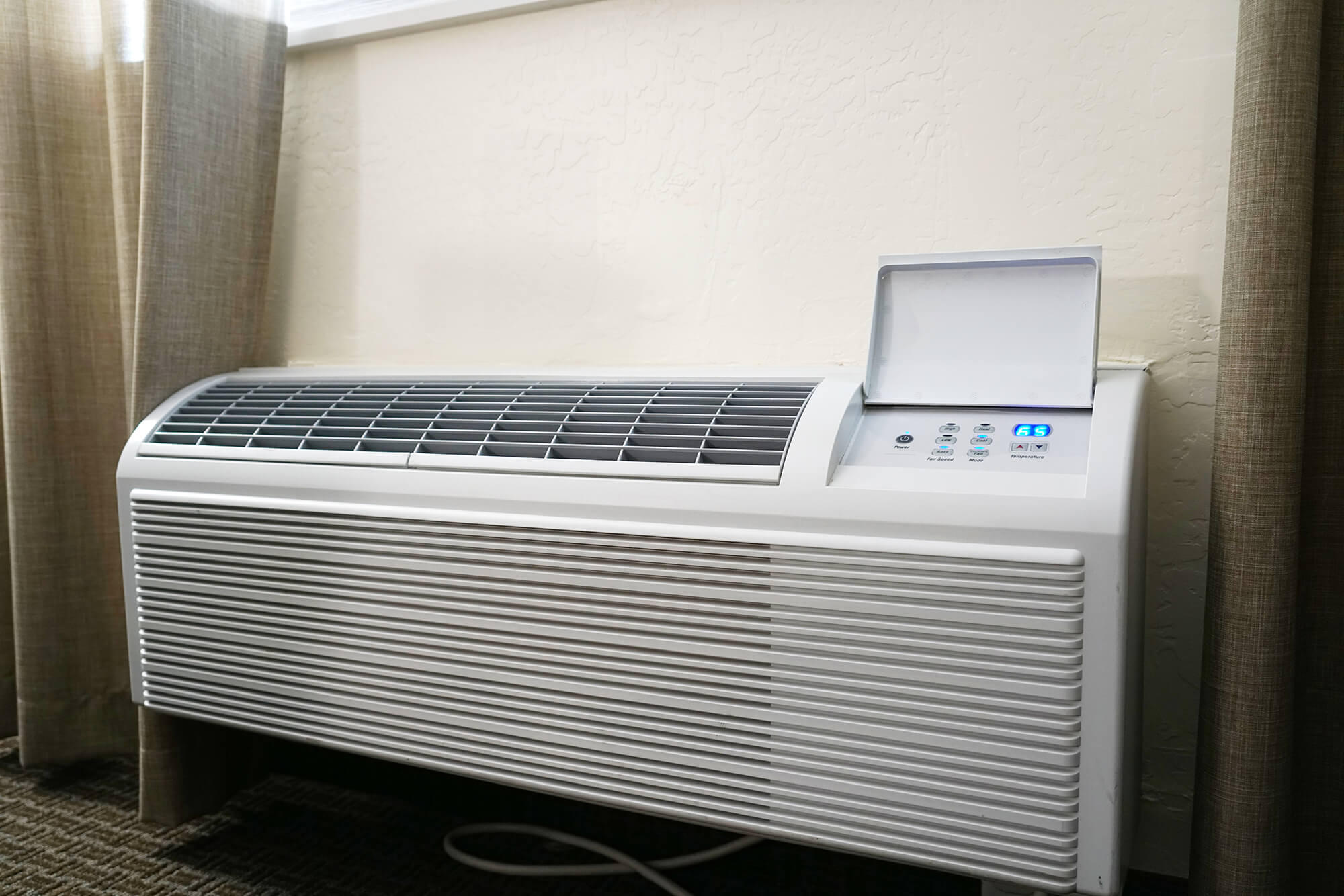
THE PRODUCT:
Packaged terminal air conditioners and heat pumps (PTACs and PTHPs) are combined heating and cooling assemblies that are typically found in small hotels and are intended to be mounted through the wall. PTACs/PTHPs are becoming increasingly common in multifamily residential applications (mid-rise apartment buildings). This equipment serves a single zone and the largest equipment on the market today provides 1.5 tons of cooling. PTACs may include electric resistance heating or be designed to utilize hot water or steam provided by a boiler for heating. PTACs may also provide “make-up air” for ventilation.
PTACs are a category of ASHRAE equipment.
THE STANDARD:
The current standards for PTACs/PTHPs took effect in 2017. The EER and COP standards are identical to the levels in the 2013 version of ASHRAE 90.1.
In 2023, DOE issued a final determination not to amend standards for PTACs/PTHPs.
*The cooling energy efficiency metric, energy efficiency ratio (EER), is expressed as the cooling capacity (Btu/hr) divided by the power input (watts). The heating energy efficiency metric, coefficient of performance (COP), is expressed as the heat delivered (Btu) divided by the energy input (Btu).
KEY FACTS:
Technology options for improving the efficiency of PTACs and PTHPs include higher-efficiency compressors and fan motors and increased heat exchanger area.
Filings
Timeline
| Federal | Date |
| Next Review Due | 2026 |
| Final Negative Determination | 2023 |
| 3rd Federal Standard Effective | 2017 |
| 3rd Federal Standard Adopted | 2015 |
| 2nd Federal Standard Effective | 2012 |
| 2nd Federal Standard Adopted | 2008 |
| 1st Federal Standard Effective | 1994 |
| 1st Federal Standard Adopted | 1992 |
| EPACT Initial Federal Legislation Enacted | 1992 |